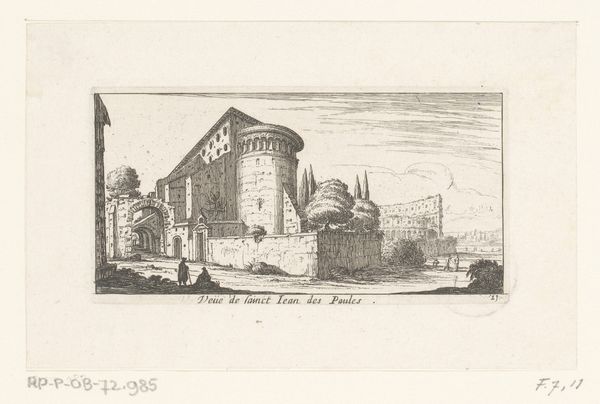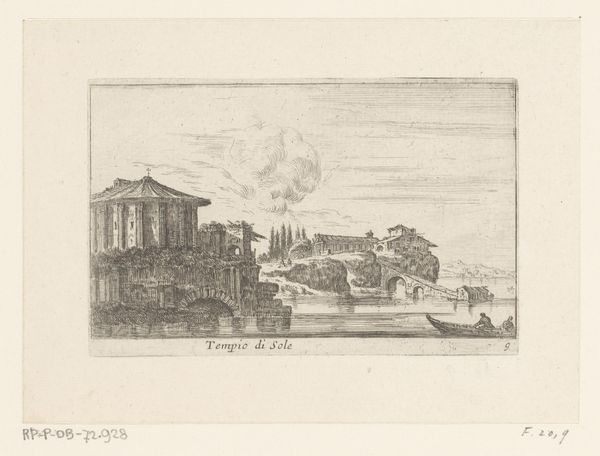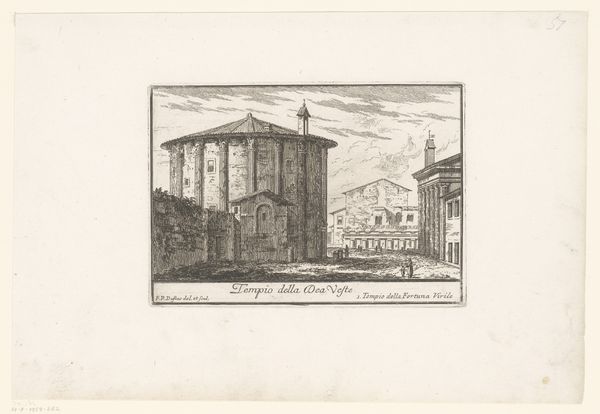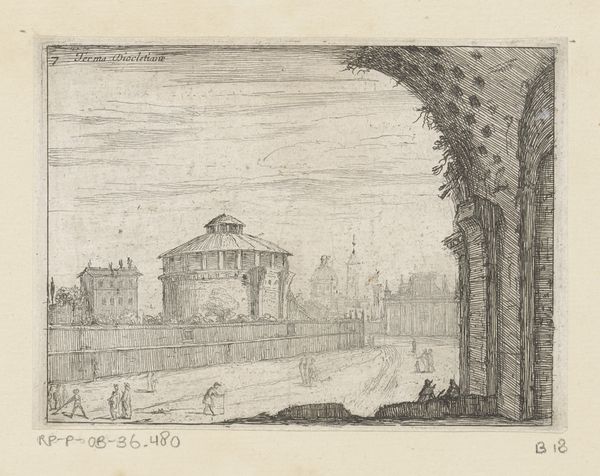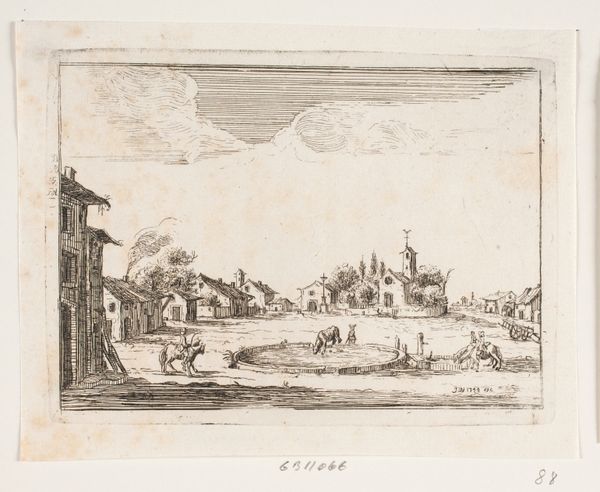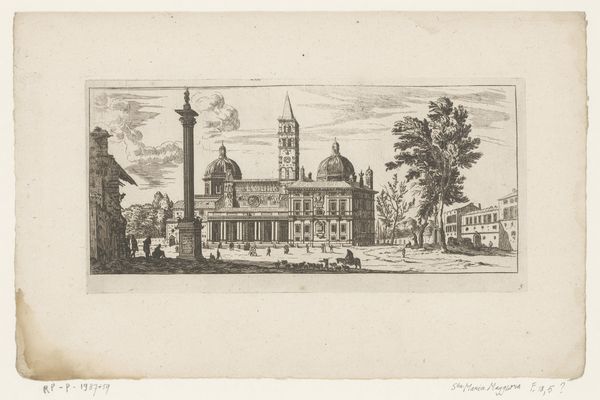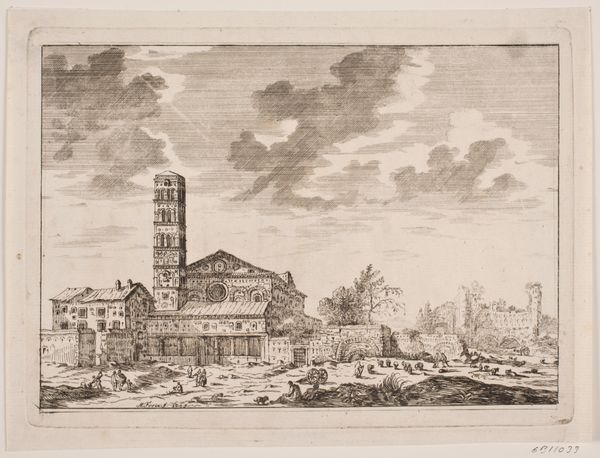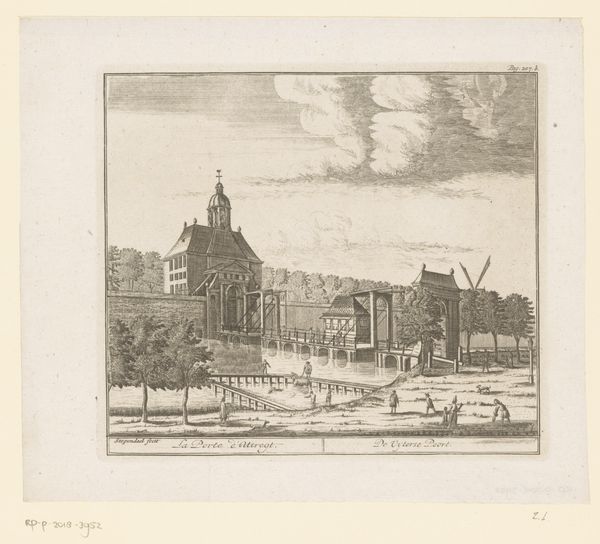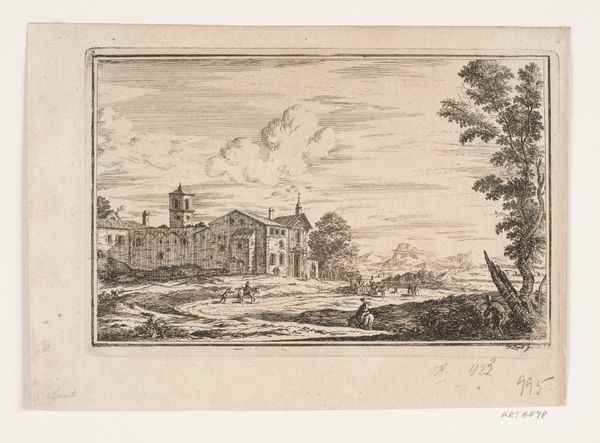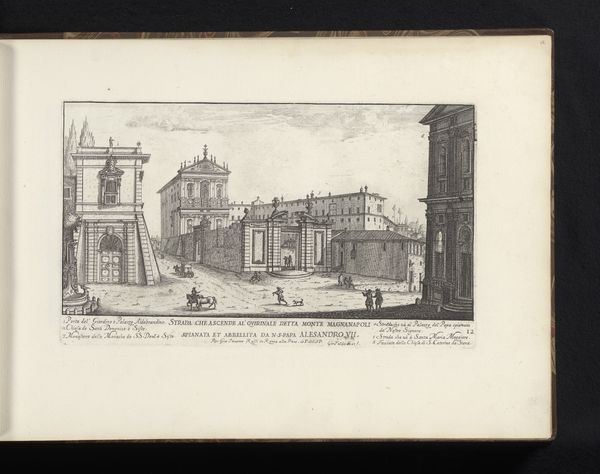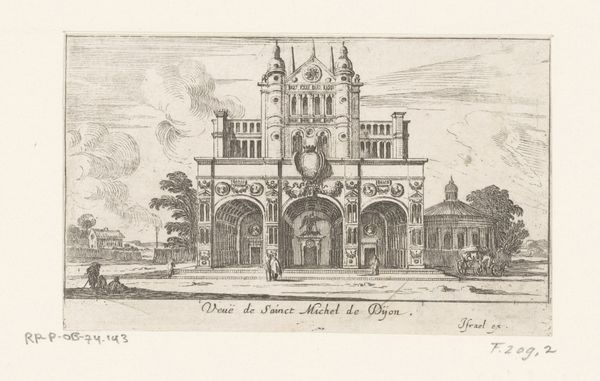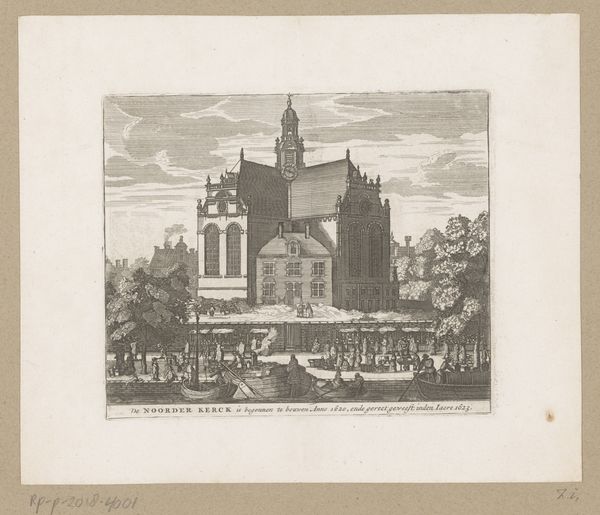
print, etching, engraving, architecture
#
baroque
# print
#
etching
#
old engraving style
#
landscape
#
cityscape
#
engraving
#
architecture
Dimensions: height 60 mm, width 115 mm
Copyright: Rijks Museum: Open Domain
Curator: Today, we’re examining Israel Silvestre’s etching and engraving, "Façade van de San Pietro," created between 1636 and 1661. Silvestre was a prolific printmaker who is especially well-known for his detailed cityscapes. Editor: It strikes me as a really curious scene; there's this kind of almost austere architectural grandeur in the foreground, then people sort of scattered, going about their day like it's just another backdrop. It feels very theatrical, doesn't it? Like a stage set for something… melancholic? Curator: That feeling, I think, is partly because it speaks to power dynamics in the baroque period. Cityscapes such as this served not only to depict reality but to showcase authority and influence. Note how the church façade and surrounding gardens, although rendered with exquisite precision, still dwarf the people. Silvestre is interested in power, not individual experience. Editor: Absolutely, the hierarchy is palpable, but there's also something kind of playful about the details – I’m especially taken by that central fountain. It nearly looks like the church is performing in front of it! What an intriguing detail. Does it speak to how power in the church flows? Curator: More than likely. The meticulous engraving work does bring out those details to full effect. The inclusion of figures, though small, prompts questions about who has access to this space and what role the Church plays in regulating public life. Silvestre seems to quietly nudge us towards these ponderings. Editor: The piece gives me the feeling that there is a narrative being alluded to, a kind of silent film playing out that you have to construct in your mind's eye. But in terms of its execution, it almost reads as technical drawing, something almost brutally stark against its deeper social commentary, maybe? Curator: The rigid formality you observe could be related to artistic and intellectual currents in its time, perhaps even leaning towards cartography. But it seems a disservice not to remember how Silvestre makes no clear statement of what is "right," even while pointing the reader toward the systems and hierarchies embedded in its space. It captures the everyday while nudging toward grand narratives and social commentary. Editor: Looking at it this way changes everything. It takes what seemed simply like a detached, distant rendering and turns it into a quietly subversive conversation starter. A great look!
Comments
No comments
Be the first to comment and join the conversation on the ultimate creative platform.
